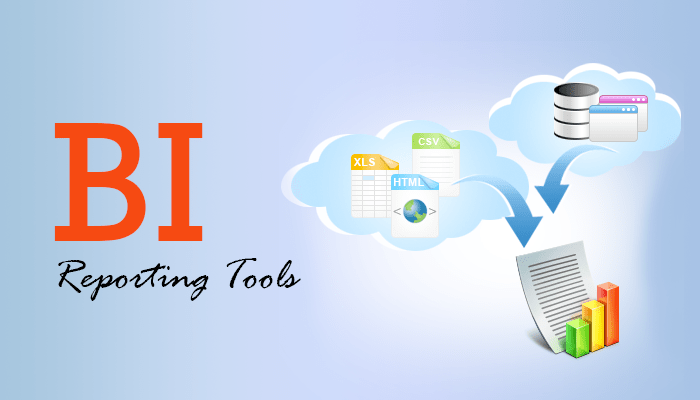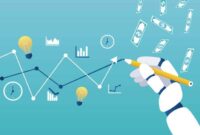BI reporting software is a powerful tool that revolutionizes data analysis and decision-making processes in organizations. Dive into the world of BI reporting software to uncover its impact and significance.
Explore the key features, benefits, and implementation strategies that make BI reporting software a game-changer in the realm of business intelligence.
Overview of BI Reporting Software
BI reporting software is a crucial tool in the realm of business intelligence, allowing organizations to gather, analyze, and visualize data to make informed decisions. It helps in transforming raw data into meaningful insights, enabling businesses to monitor performance, identify trends, and optimize processes.
Key Features of BI Reporting Software
- Interactive Dashboards: BI reporting software offers interactive dashboards that provide a comprehensive view of key performance indicators (KPIs) and metrics in real-time.
- Ad Hoc Reporting: Users can create custom reports on the fly without the need for IT intervention, allowing for quick and flexible analysis.
- Data Visualization: The software leverages various visualization techniques like charts, graphs, and maps to present data in a visually appealing and easy-to-understand manner.
- Drill-Down Capabilities: Users can drill down into detailed data to uncover underlying patterns and insights, facilitating deeper analysis.
Types of BI Reporting Software
- Self-Service BI Tools: These tools empower business users to create reports and analyze data independently, without relying on IT support.
- Enterprise BI Platforms: Designed for large organizations, these platforms offer robust features for complex data analysis, scalability, and security.
- Cloud-Based BI Solutions: Cloud-based BI reporting software provides flexibility, accessibility, and cost-effectiveness for businesses looking to leverage the power of the cloud.
Benefits of Using BI Reporting Software

Implementing BI reporting software offers numerous advantages for data analysis, decision-making processes, and data visualization. This software enhances the ability to derive insights from data and make informed business decisions based on real-time information.
Improved Decision-Making Processes, BI reporting software
- BI reporting software provides access to real-time data, enabling faster decision-making.
- Users can easily track key performance indicators (KPIs) and identify trends to make strategic decisions.
- Advanced analytics tools within BI software allow for predictive modeling and scenario planning, leading to more accurate forecasts.
Enhanced Data Visualization
- BI reporting software offers interactive dashboards and data visualization tools that make it easier to understand complex data sets.
- Users can create customizable reports and visualizations to communicate insights effectively to stakeholders.
- Interactive charts, graphs, and maps help in identifying patterns and correlations within the data for better decision-making.
Key Features to Look for in BI Reporting Software

When choosing a BI reporting software, it’s crucial to consider the key features that will meet your business needs and help you extract valuable insights from your data. Here are some essential features to look out for:
Data Visualization Options
Data visualization is a critical aspect of BI reporting software as it allows users to easily interpret complex data sets through charts, graphs, and dashboards. Look for software that offers a wide range of visualization options to present data in a clear and intuitive manner.
- Interactive dashboards
- Customizable charts and graphs
- Drill-down capabilities for detailed analysis
Customization Capabilities
The ability to customize reports and dashboards according to your specific requirements is another crucial feature to look for in BI reporting software. Make sure the software allows you to tailor reports to suit your business goals and preferences.
- Drag-and-drop interface for easy customization
- Ability to create personalized KPIs
- Custom report templates
Real-Time Reporting
Real-time reporting enables businesses to access up-to-date information and make informed decisions quickly. Look for BI reporting software that offers real-time data processing and reporting capabilities to stay ahead of the competition.
- Real-time data streaming
- Instant alerts and notifications
- Live data connectivity
Scalability and Integration
Scalability is essential as your business grows and your data volumes increase. Choose BI reporting software that can scale according to your needs and seamlessly integrate with other data sources and third-party applications.
- Support for large data sets
- Compatibility with various data sources
- API integrations for seamless connectivity
Advanced Features
Top BI reporting software sets themselves apart by offering advanced features that enhance data analysis and reporting capabilities. Look for software that goes beyond the basics to provide cutting-edge functionalities.
- Predictive analytics for forecasting
- Natural language processing for query generation
- Machine learning algorithms for data insights
Implementation and Integration of BI Reporting Software

Implementing and integrating BI reporting software within an organization can be a complex process that requires careful planning and execution. Here, we will discuss the steps involved in implementing BI reporting software, best practices for integrating it with existing systems, and common challenges faced during the implementation process and how to overcome them.
Steps in Implementing BI Reporting Software
- Define objectives and requirements: Clearly Artikel the goals you want to achieve with the BI reporting software and the specific features you need.
- Choose the right software: Select a BI reporting software that aligns with your objectives and requirements.
- Set up the infrastructure: Ensure that the necessary infrastructure, such as servers and databases, is in place to support the software.
- Data integration: Integrate data from various sources into the BI reporting software to provide a comprehensive view of the organization’s data.
- Training and testing: Train employees on how to use the software effectively and conduct thorough testing to ensure it meets your needs.
- Deployment and monitoring: Deploy the software across the organization and continuously monitor its performance to make any necessary adjustments.
Best Practices for Integrating BI Reporting Software
- Ensure compatibility: Ensure that the BI reporting software is compatible with existing systems and technologies used within the organization.
- Data quality assurance: Implement data quality assurance processes to ensure that the data being analyzed is accurate and reliable.
- User involvement: Involve end-users in the integration process to gather feedback and ensure that the software meets their needs.
- Customization: Customize the software to fit the specific requirements of the organization and its users.
Common Challenges and How to Overcome Them
- Data silos: Address data silos by integrating data from various sources into the BI reporting software to provide a unified view of the organization’s data.
- Lack of expertise: Provide training to employees to enhance their skills in using the BI reporting software effectively.
- Resistance to change: Communicate the benefits of the software to employees and involve them in the implementation process to overcome resistance to change.
In conclusion, BI reporting software offers a transformative approach to data analysis, decision-making, and visualization. Embrace the power of BI reporting software to take your organization to new heights of success.
When it comes to business intelligence, using the right BI platforms is crucial for success. These platforms provide the foundation for storing, analyzing, and visualizing data to make informed decisions. In addition to platforms, businesses also rely on BI dashboards to display key metrics and KPIs in a visually appealing way. To make sense of all the data collected, companies turn to BI analytics tools to uncover insights and trends that drive business growth.
When it comes to business intelligence, utilizing the right BI platforms is crucial for data management and analysis. These platforms offer a comprehensive solution for organizing and visualizing data, making it easier for businesses to make informed decisions.
One of the key components of BI platforms is the use of BI dashboards , which provide a real-time snapshot of key metrics and KPIs. These dashboards help businesses track performance and identify trends, facilitating faster decision-making processes.
Moreover, BI analytics play a vital role in extracting insights from data to drive strategic business decisions. By leveraging advanced analytics tools, businesses can uncover patterns and trends that can lead to increased efficiency and profitability.




